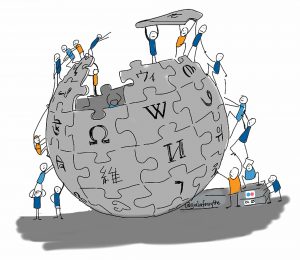12 Interactive Teaching Methods and Strategies
Online Discussions
Educational technologies can encourage and facilitate a variety of interaction and teaching styles. Though many instructors are particularly familiar with solitary teaching techniques where learners attend lectures and interact with content such as library resources, databases, reading journals, etc., this section focuses on teaching techniques that encourage and facilitate peer interaction.
Small group assignments in your course provide students an opportunity to learn from their peers, interact in a team environment, brainstorm and debate issues and ideas, and role-play. Two possible uses of groups include:
- Discussion Groups focus on issues related to course content and require higher-order thinking skills. The instructor facilitates the discussion, guiding and encouraging participation when needed. These groups may be a required aspect of the course, accounting for some participation grade or overall value.
- Project Groups are generally small groups that interact to accomplish a shared goal (e.g., project, paper, presentation). Projects may be submitted to the instructor or used as a learning activity for the entire class, possibly including a group presentation followed by a discussion.
The following video discusses strategies for creating and evaluating effective online discussions.
Featuring: Tracy Penny-Light (Waterloo), Peter Thompson (Carleton), MJ D’Elia (Guelph).
Wikis
Wikis are collaboratively written, edited, revised, and managed web pages. Ideal for group research and writing projects, the history function in wikis allows instructors and students to see the contributions of each group member in minute detail. They may be deployed at the course, group, or individual level.
Wikipedia is one of the most prominent wiki tools on the Internet. Entries are created and anyone can add entries, revise existing ones, etc. You might think of this tool as an exercise in “group think”. Wikis can be used as a knowledge management system, as a community-based website, and as a learner-centred project.
Blogs
Blogs, a shortened term for “web-log”, are online personal journals or opinion articles publicly accessed on the Internet. They can also be password-protected by being placed on a secure server or private network. Blogs work well in small classes; however, they have been effectively used in large classes by creating group or team blogs. Generally, blogs have frequent updates and posts that are displayed in descending chronological order. Blog entries can include images, recorded sound files or active links to other websites or blogs. A blogger is anyone who creates or contributes to a blog, usually by sharing ideas, feelings, hobbies, or work.
Instructors have found blogs to be an effective communication mechanism to assist with a variety of outcomes. The following are examples from experienced educators:
Social Media
Featuring: Shawn Graham (Carleton), Dan Gillis (Guelph), Bob Burk (Carleton), MJ D’Elia (Guelph).
The popularity of social networking websites has rapidly increased in the past few years. Social networking websites continue to be generally regarded as personal social spaces rather than platforms for teaching and learning (Baran, 2010). While this may be true, there are several pedagogies that utilize social networking sites for teaching purposes.
Teaching with web 2.0 technologies: Twitter, wikis & blogs – Case study


